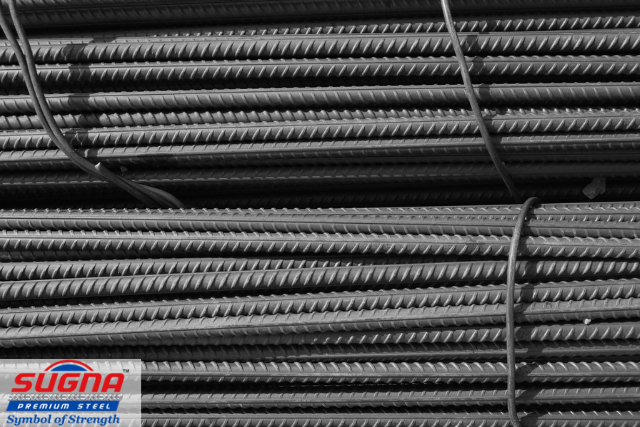Introduction to Steel Bars
Steel bars, the unsung heroes of construction, play a vital role in shaping our modern world. From the houses we live in to the skyscrapers that touch the sky, steel bars are a fundamental element of construction. But did you know there are different types of steel bars? Today, we’re going to dig into two popular types: TMT and TMX bars.
Understanding TMT Bars
TMT, short for Thermo Mechanically Treated bars, are high-strength reinforcement bars known for their superior ductility, weldability, and bond strength. An integral part of modern construction, TMT bars are favored for their enhanced durability and earthquake-resistant properties.
Understanding TMX Bars
On the flip side, we have TMX bars. TMX bars are a newer, advanced type of reinforced steel that offers high strength, flexibility, and superior elongation. These bars have been gaining popularity recently due to their high corrosion resistance and improved seismic properties.
The Manufacturing Processes
Every great product starts with a great process, right? Let’s peek into the manufacturing of these bars.
Process of Making TMT Bars
TMT bars are produced through a unique metallurgical process known as ‘Thermo Mechanical Treatment.’ This involves three stages – quenching, self-tempering, and atmospheric cooling. This process provides the bars with a strong outer layer and a ductile core, enhancing their overall strength and durability.
Process of Making TMX Bars
Unlike TMT bars, TMX bars are manufactured using a special process called ‘Tempcore.’ This involves heating the bars to a high temperature and then rapidly cooling them. This gives TMX bars a tempered martensitic surface layer and a ferrite-pearlite core, which imparts superior strength and flexibility to the bars.
Comparing TMT and TMX Bars
Now that we have some understanding of TMT and TMX bars, let’s dive into their comparison.
Strength and Durability
While both TMT and TMX bars are known for their strength and durability, TMX bars edge out TMT bars slightly due to their unique manufacturing process and better seismic properties.
Cost-effectiveness
In terms of cost-effectiveness, TMT bars are typically more affordable than TMX bars. However, TMX bars might provide better value in the long run due to their superior quality and durability.
Versatility
Both TMT and TMX bars are versatile and widely used in different construction projects. However, TMX bars are seen as more flexible and adaptable due to their high elongation.
Environmental Impact
Both types of bars have their environmental impacts, but TMX bars may have a slight advantage due to their energy-efficient manufacturing process.
Use Cases: TMT vs TMX Bars
Residential Construction
In residential construction, TMT bars are commonly used due to their affordability and sufficient strength. However, TMX bars are gradually making their way into this sector due to their superior properties.
Infrastructure Development
In large-scale infrastructure projects, TMX bars are usually the preferred choice. Their high strength, flexibility, and durability make them suitable for building bridges, dams, and high-rise buildings.
TMT Vs TMX

Differences Between TMT and TMX Bars
| Features | TMT Bars | TMX Bars |
|---|---|---|
| Manufacturing Process | Made through ‘Thermo Mechanical Treatment’, involving quenching, self-tempering, and atmospheric cooling. | Made using a ‘Tempcore’ process, involving heating and rapid cooling. |
| Strength & Durability | Known for their high strength and durability, with a tough outer layer and ductile core. | Slightly higher strength and durability due to their tempered martensitic surface layer and ferrite-pearlite core. |
| Cost-effectiveness | Typically more affordable but may require more maintenance in the long run. | More expensive initially but could provide better value due to superior durability. |
| Versatility | Commonly used in different types of construction projects. | More adaptable due to their high elongation, widely used in infrastructure projects. |
| Environmental Impact | Manufactured in a process that could have more environmental impact. | Manufactured in an energy-efficient process, leading to slightly less environmental impact. |
| Residential Construction Use | Commonly used due to affordability and sufficient strength. | Gradually making their way into residential construction due to superior properties. |
| Infrastructure Development Use | Used, but TMX bars are often preferred for larger projects. | Preferred due to high strength, flexibility, and durability, suitable for bridges, dams, and high-rise buildings. |
Conclusion
In conclusion, both TMT and TMX bars have their unique strengths and applications. The choice between the two ultimately depends on the specific requirements of your project, budget, and long-term goals. Remember, the best bar for your construction project is the one that suits your needs the most.
FAQs
- What are TMT and TMX bars? TMT and TMX bars are types of steel reinforcement bars used in construction. TMT stands for Thermo Mechanically Treated, while TMX represents a new generation of reinforced steel bars.
- Which is stronger, TMT or TMX bars? While both are strong and durable, TMX bars are considered slightly stronger due to their manufacturing process.
- Are TMX bars more expensive than TMT bars? Typically, yes. TMX bars tend to be more expensive due to their superior properties.
- Can I use TMX bars for my home construction? Absolutely. While TMX bars are often used in large infrastructure projects, they can also be beneficial in residential construction due to their strength and corrosion resistance.
- Which bar is more environmentally friendly? While both types of bars have their environmental impacts, TMX bars may be slightly more environmentally friendly due to their energy-efficient manufacturing process.

